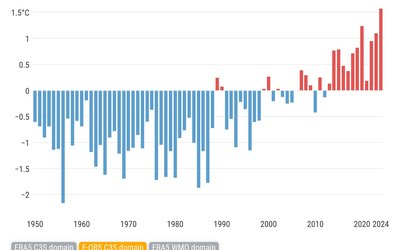Heatwaves in northern Europe are increasingly similar to those in the south
April 3, 2024

All over Europe, since 1950, the frequency, duration and intensity of heatwaves have increased. In the last two decades, these changes were most dramatic for northwest and central Europe.
The characteristics of heatwaves have been studied for three regions in Europe: (1) the Iberian Peninsula, including Portugal and Spain, (2) France, and (3) the part of northwest and central Europe including northern France, Belgium, the Netherlands and Germany.
Changes most dramatic in the north
The study shows that since 1950, in all these regions and for the months June, July and August, the frequency of heatwaves has increased. Also, the spatial extent, duration and intensity of heatwaves have increased. These changes, however, have not occurred evenly across Europe. Changes are most dramatic for northwest and central Europe in the last two decades. Both the increase of heatwave frequency and heatwave intensity in the period 1998–2021 was much larger in these northern European countries than in France and the Iberian Peninsula.
These differences across Europe are due to the fact that daily maximum temperatures have not risen at the same rate. In Portugal and Spain, the warming trends for daily mean and daily maximum temperatures are similar. In France, daily maximum temperatures have risen 28% more than daily mean temperatures, and in the northwest the difference is as high as 40%. These results show that the differences in heatwaves between northern and southern Europe have become smaller: the heatwaves in the north are increasingly similar to those in the south. According to the authors of this study, this may be a result of increasingly warmer air brought in from Spain and Portugal during heatwaves in the north.
Warning sign for human health
These changes have consequences for human health. In the last two decades, human exposure to heatwaves has increased most dramatically for these northern European countries. For the public health sector in these countries, heat-related mortality in the south should be a warning sign. In the Mediterranean region more than 2.5% of all annual deaths are associated with excess heat, compared with nearly 1% worldwide.
Source: Khodayar Pardo and Paredes-Fortuny, 2024. Weather and Climate Extremes 43, 100648.








